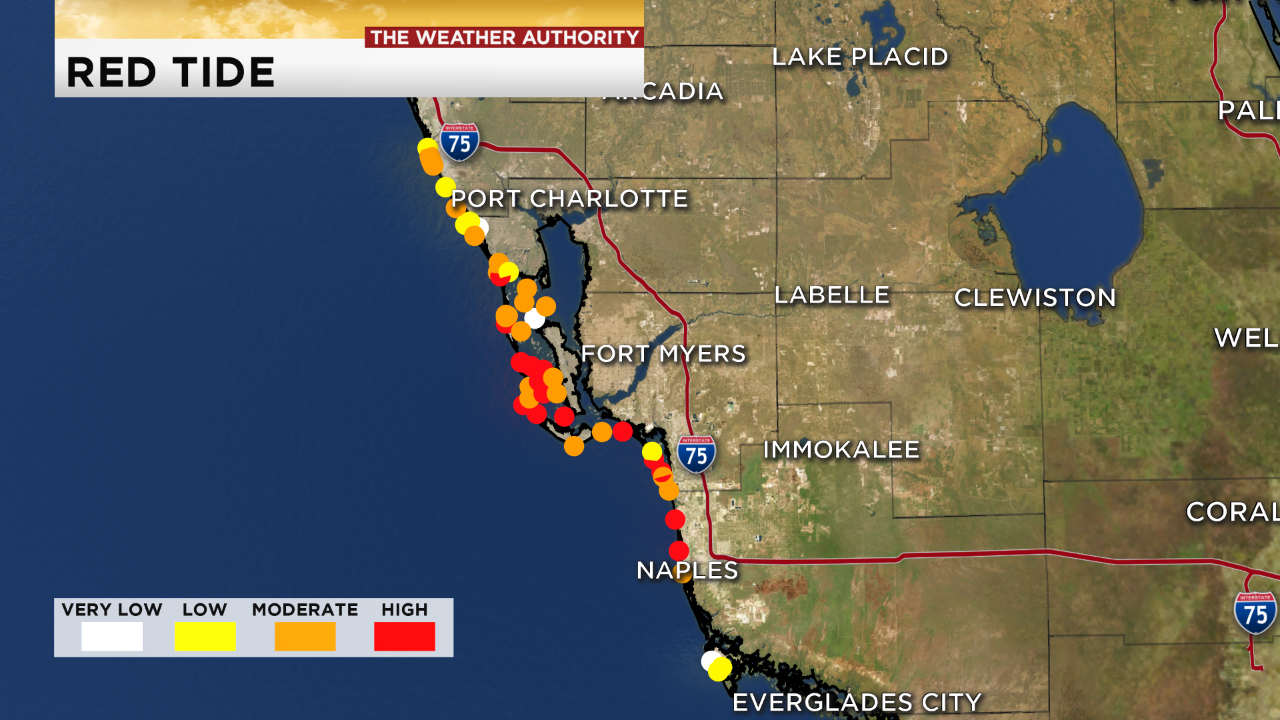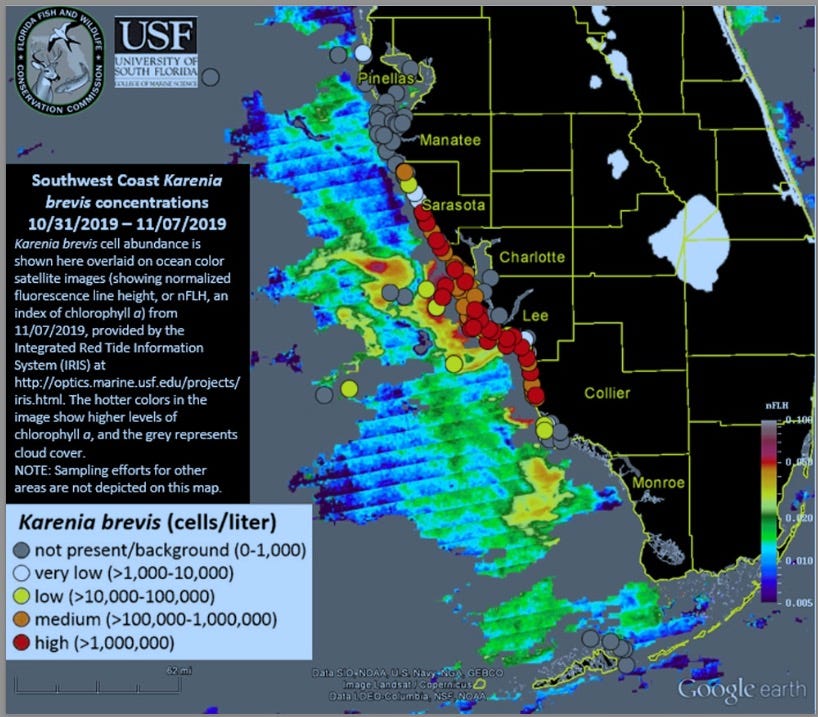

Red tides have attracted major attention of policymakers, the scientific community, and society due to the complexity of the process and negative effects on the environment, human health, and coastal economies 18, 19.
2021 red tide florida map driver#
Nutrient enrichment from human activities has also been identified as a potential driver of red tide blooms, especially in areas with high agricultural production 16, 17. Iron deposition from Saharan dust was suggested to be another possible cause of red tide blooms in the Gulf of Mexico 15. Local winds and deep-ocean forcing effects influence the coastal ocean circulation that can alter the nutrient state of the WFS and influence the occurrence of K. The exact cause of severe red tide blooms remains unknown but several anthropogenic and natural processes have been suggested as the causative factor.

Red tides occur in the Gulf of Mexico almost annually and were first recorded in 1874 11. brevis is often present in background concentrations along the WFS, but in some years severe blooms can form, usually along the southwest coast of Florida and late in the summer. On the West Florida Shelf (WFS) in the Gulf of Mexico, red tides are a type of HAB that are caused by the toxic dinoflagellate Karenia brevis 9, 10. In the US, the estimated annual economic impact due to HABs on commercially harvested fish and shellfish in 2018 and aquaculture production in 2017 were $5.6 billion and $1.5 billion, respectively 8. HABs may disturb marine communities by inducing shifts in the spatiotemporal distribution of fish species, causing massive mortality and impacting the whole ecosystem 5, 6, 7. HABs can affect the quality of the environment and thus the ecosystem and marine species, including endangered and protected species 3, 4. Although HABs are often localized and short in duration, severe blooms can inflict damage on the marine environment, have adverse effects on human health, and impact the fishing and tourism economies 2. HABs refer to episodic proliferations of specific micro or macroalgae species that cause toxicity in the waters or lead to hypoxia. Globally, harmful algal blooms (HABs) are considered a growing concern because of their increasing frequency and impacts 1. This study represents a step forward to operationalize spatiotemporal ecosystem models for management purposes that may increase the ability of fisheries managers to respond more effectively and be more proactive to episodic mortality events, such as those caused by red tides. Sublethal and indirect food-web effects of red tide triggered compensatory responses such as avoidance behavior and release from predation and/or competition. Our results suggest severe red tide impacts have occurred on the WFS at the ecosystem, community, and population levels in terms of biomass, catch, and productivity. The inclusion of both lethal and sublethal response functions to red tide and a comprehensive calibration procedure allowed to systematically evaluate red tide effects and increased the robustness of the model and management applicability. To model red tide effects on the marine community, we used Ecospace, the spatiotemporal module of the ecosystem modeling framework Ecopath with Ecosim. Therefore, it is important to evaluate and quantify the spatiotemporal impacts of red tides to improve population assessments, mitigate potential negative effects through management, and better understand disturbances to support an ecosystem-based management framework. However, red tide events occur regularly that can impact fisheries resources as well as ecosystem state, functioning, and derived services. The West Florida Shelf (WFS), located in the eastern Gulf of Mexico, fosters high species richness and supports highly valuable fisheries.


 0 kommentar(er)
0 kommentar(er)
